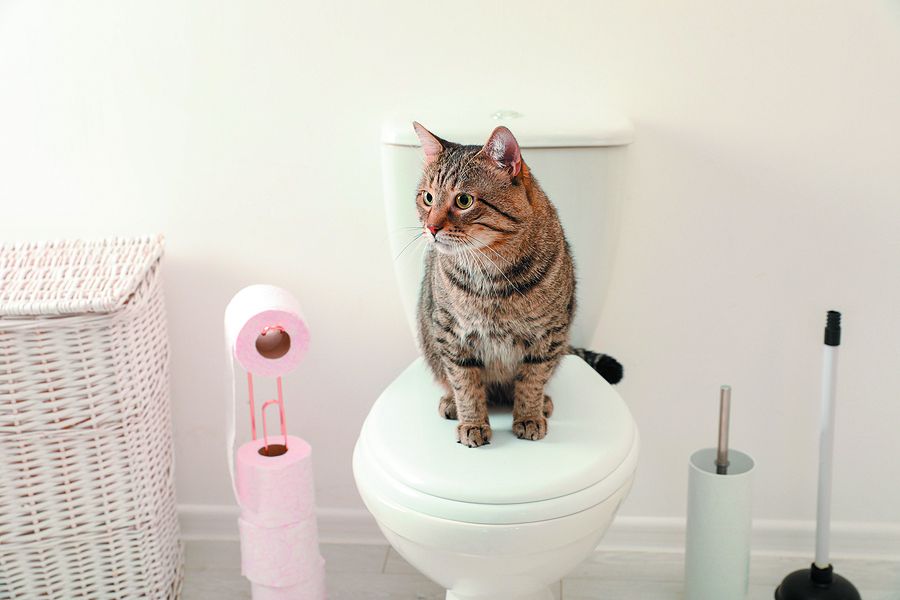Reasons Flushing Cat Poop Down Your Toilet Isn't a Good Idea - Tips for Safer Handling
Reasons Flushing Cat Poop Down Your Toilet Isn't a Good Idea - Tips for Safer Handling
Blog Article
This article down below relating to Can You Flush Cat Poo or Litter Down the Toilet? is incredibly stimulating. You should investigate it.

Intro
As pet cat owners, it's vital to be mindful of just how we take care of our feline good friends' waste. While it might appear hassle-free to purge feline poop down the bathroom, this practice can have detrimental repercussions for both the atmosphere and human health and wellness.
Alternatives to Flushing
Luckily, there are more secure and much more liable means to throw away pet cat poop. Think about the complying with alternatives:
1. Scoop and Dispose in Trash
The most typical method of getting rid of cat poop is to scoop it into a naturally degradable bag and throw it in the trash. Make sure to utilize a specialized clutter inside story and dispose of the waste immediately.
2. Use Biodegradable Litter
Choose biodegradable cat clutter made from products such as corn or wheat. These trashes are eco-friendly and can be safely dealt with in the garbage.
3. Hide in the Yard
If you have a backyard, take into consideration burying cat waste in an assigned location away from veggie yards and water sources. Be sure to dig deep adequate to stop contamination of groundwater.
4. Install a Pet Waste Disposal System
Purchase an animal garbage disposal system particularly made for cat waste. These systems make use of enzymes to break down the waste, lowering smell and ecological influence.
Health Risks
Along with environmental worries, flushing pet cat waste can additionally pose wellness risks to human beings. Cat feces may consist of Toxoplasma gondii, a bloodsucker that can cause toxoplasmosis-- a potentially extreme ailment, especially for expecting women and individuals with damaged body immune systems.
Ecological Impact
Flushing pet cat poop introduces harmful pathogens and bloodsuckers into the supply of water, presenting a significant risk to marine ecological communities. These contaminants can negatively impact aquatic life and concession water top quality.
Verdict
Responsible family pet ownership extends beyond giving food and shelter-- it additionally entails appropriate waste administration. By refraining from flushing feline poop down the bathroom and going with alternate disposal approaches, we can decrease our environmental impact and secure human health and wellness.
Why Can’t I Flush Cat Poop?
It Spreads a Parasite
Cats are frequently infected with a parasite called toxoplasma gondii. The parasite causes an infection called toxoplasmosis. It is usually harmless to cats. The parasite only uses cat poop as a host for its eggs. Otherwise, the cat’s immune system usually keeps the infection at low enough levels to maintain its own health. But it does not stop the develop of eggs. These eggs are tiny and surprisingly tough. They may survive for a year before they begin to grow. But that’s the problem.
Our wastewater system is not designed to deal with toxoplasmosis eggs. Instead, most eggs will flush from your toilet into sewers and wastewater management plants. After the sewage is treated for many other harmful things in it, it is typically released into local rivers, lakes, or oceans. Here, the toxoplasmosis eggs can find new hosts, including starfish, crabs, otters, and many other wildlife. For many, this is a significant risk to their health. Toxoplasmosis can also end up infecting water sources that are important for agriculture, which means our deer, pigs, and sheep can get infected too.
Is There Risk to Humans?
There can be a risk to human life from flushing cat poop down the toilet. If you do so, the parasites from your cat’s poop can end up in shellfish, game animals, or livestock. If this meat is then served raw or undercooked, the people who eat it can get sick.
In fact, according to the CDC, 40 million people in the United States are infected with toxoplasma gondii. They get it from exposure to infected seafood, or from some kind of cat poop contamination, like drinking from a stream that is contaminated or touching anything that has come into contact with cat poop. That includes just cleaning a cat litter box.
Most people who get infected with these parasites will not develop any symptoms. However, for pregnant women or for those with compromised immune systems, the parasite can cause severe health problems.
How to Handle Cat Poop
The best way to handle cat poop is actually to clean the box more often. The eggs that the parasite sheds will not become active until one to five days after the cat poops. That means that if you clean daily, you’re much less likely to come into direct contact with infectious eggs.
That said, always dispose of cat poop in the garbage and not down the toilet. Wash your hands before and after you clean the litter box, and bring the bag of poop right outside to your garbage bins.
https://trenchlesssolutionsusa.com/why-cant-i-flush-cat-poop/
I discovered that page about Don’t flush cat feces down the toilet when scouting around the internet. Feel free to set aside a second to distribute this write-up if you enjoyed reading it. Many thanks for your time. Visit us again soon.
Additional Information Report this page